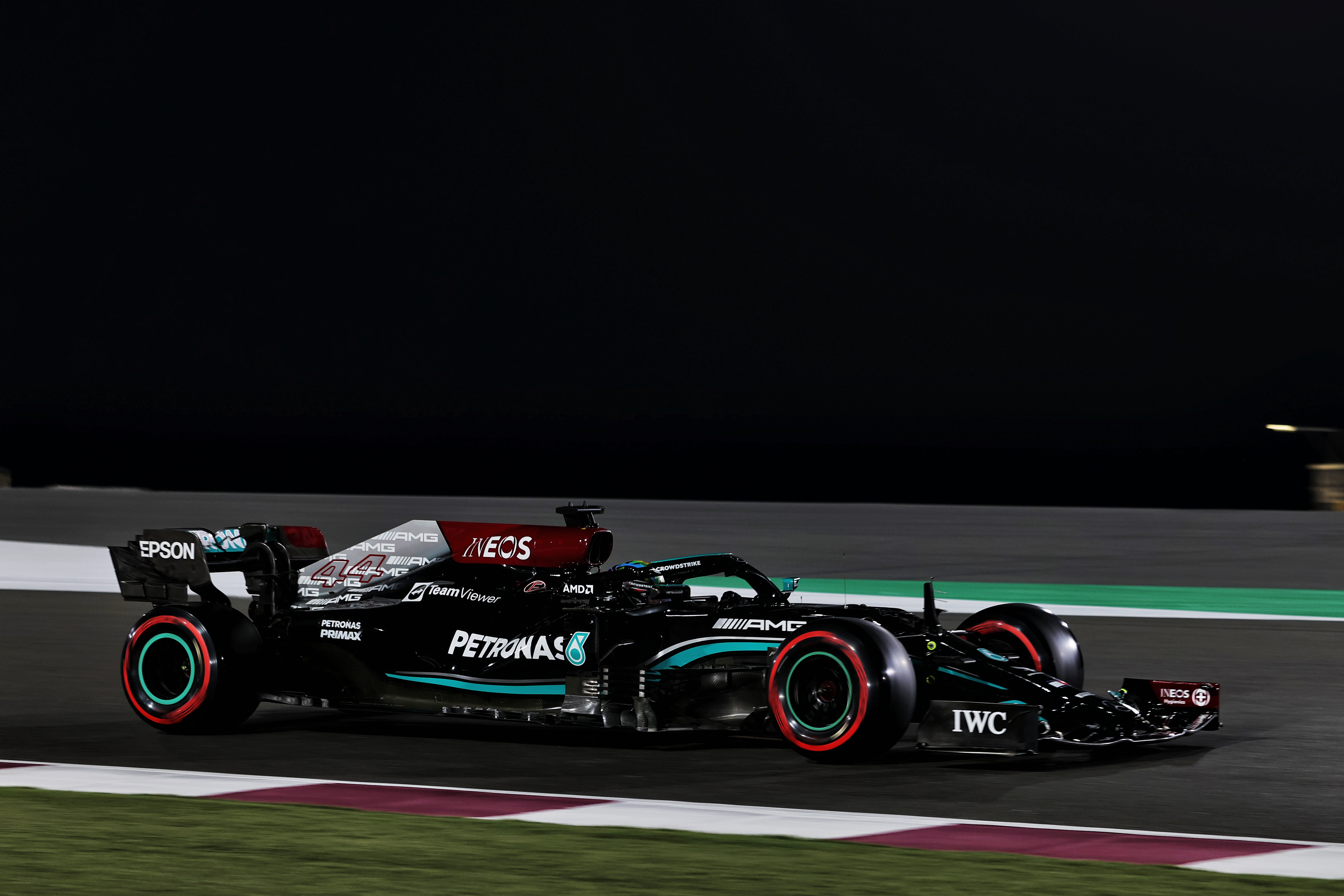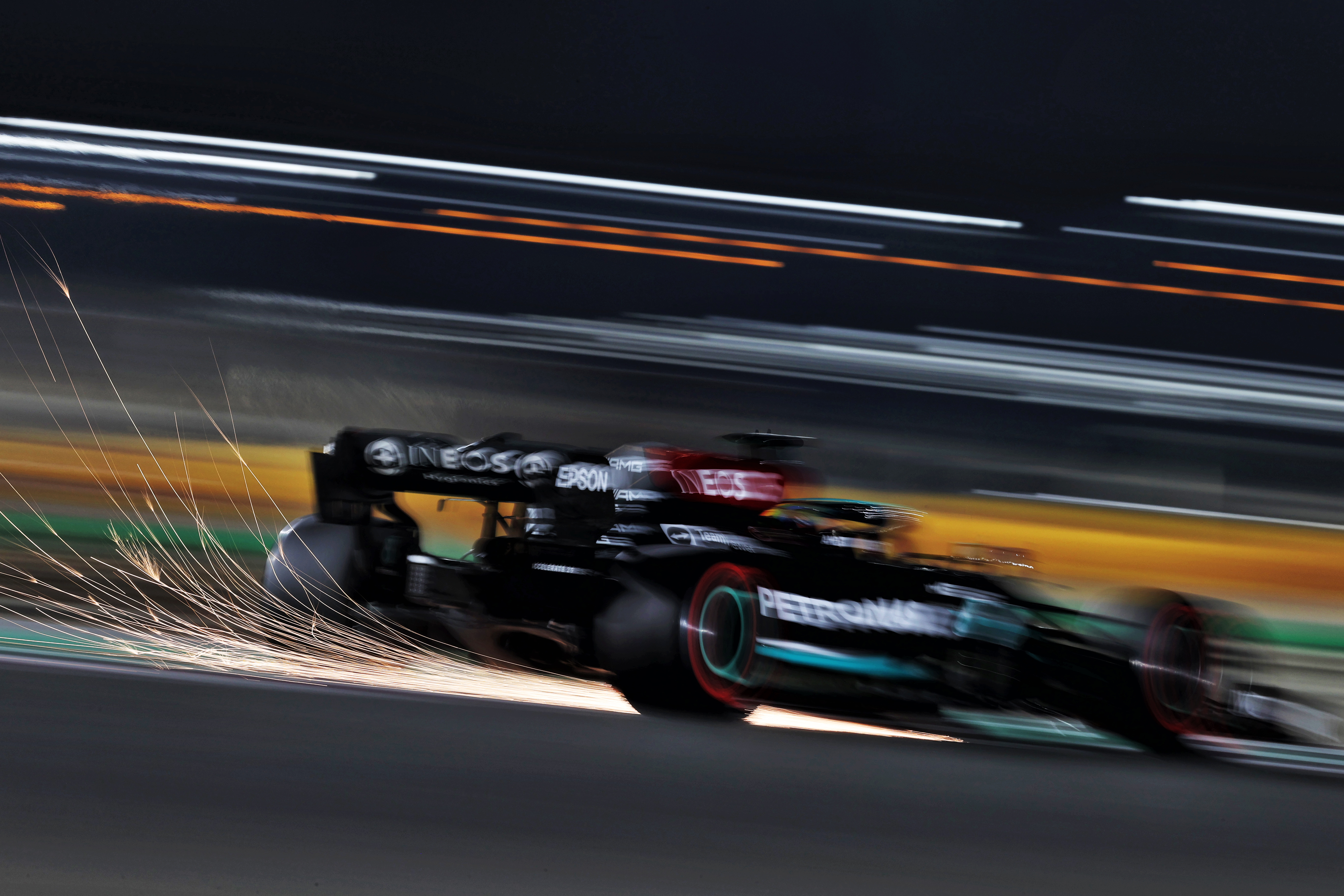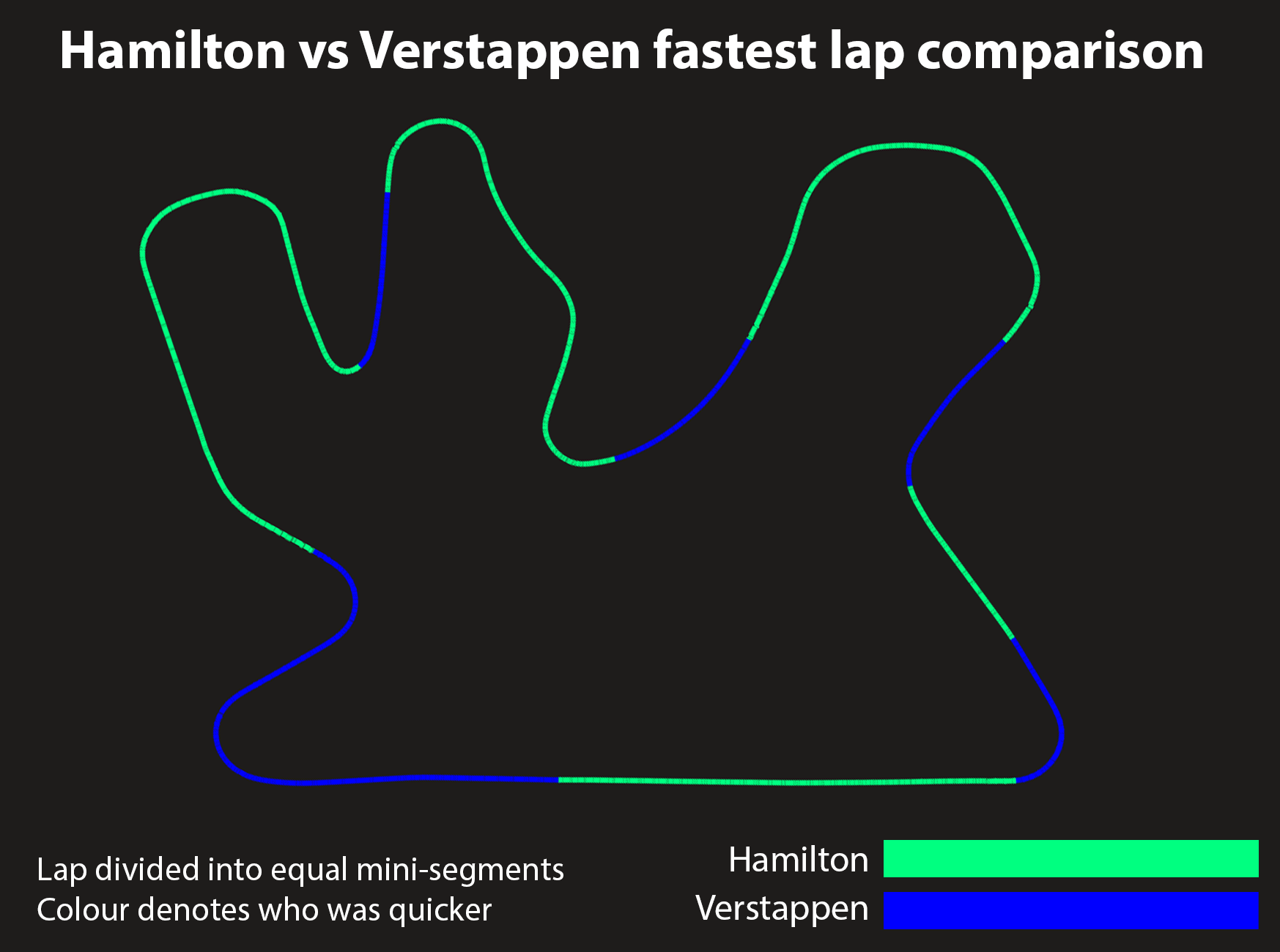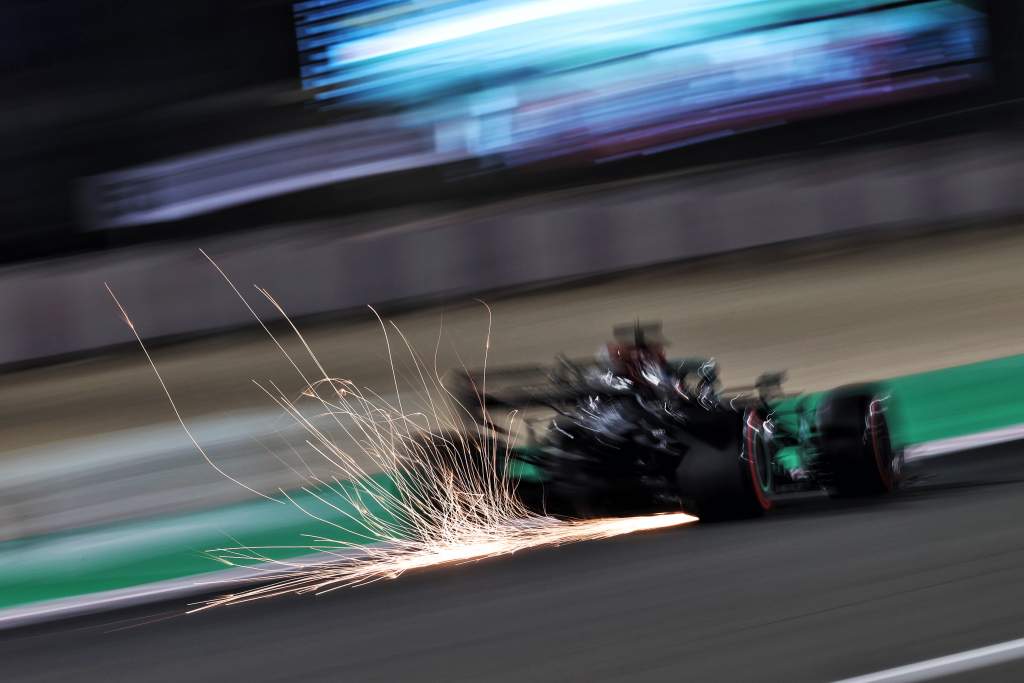Up Next

In the war of words between Christian Horner and Toto Wolff, a lot of water has been muddied in assessing the relative form of the Red Bull-Honda and Mercedes and what may be behind it.
Let’s try to at least separate the propaganda from the data to see where the reality may lie.
The backdrop to the most recent spat was Red Bull’s belief in Brazil that Mercedes was somehow getting around the rear wing flex regulations.
The way it believed Mercedes was doing this was by allowing the underside of the wing – out of sight of the rearward-facing cameras – to flex beyond a certain load, lowering the drag. “If we see that wing here,” said Horner at the beginning of the Qatar weekend, “we will protest it.”
The wing Mercedes has selected for this track looks identical to that of Brazil – and Mercedes insists that’s because it is actually the very same wing. Yet there has been no Red Bull protest. Horner says that teams have been informed an experimental new FIA load test would be tried here after qualifying [albeit of no regulatory value], intimating Mercedes had anticipated this: “They’ve been pegged back,” as he put it.

Red Bull believes that while the Mercedes wing here is architecturally the same as in Brazil, the underside is no longer flexing to the same extent. Technically, this would be feasible. The carbon lay-up of the wing underside could be denser at the outboard ends than in the middle, allowing it to deform under load. A wing with the same shape underside with a uniform carbon lay-up would look the same but not deform.
“I think their straightline speed has come down a bit,” said Horner after qualifying. “It looks very similar to our straightline speed now, which is good to see.”
It’s not a crazy theory, but do the performance patterns from the two events back it up?
In Brazil qualifying, Hamilton was sixth-fastest across the start/finish line, 7.7km/h faster than 20th-fastest Verstappen. The fastest was Yuki Tsunoda’s AlphaTauri, 4.1km/h faster than Hamilton. Tsunoda’s speed was flattered by a tow, but neither Hamilton nor Verstappen had tows on their best Interlagos laps, though obviously, both had use of DRS.
In the race, when they were each in clear air and with no DRS, Verstappen was usually at or around 300km/h over the start/finish, with Hamilton on or around 305km/h. The speed difference was not outrageous.
In Qatar Hamilton is 13th-fastest through the speed trap, 3.4km/h faster than 19th-fastest Verstappen. Fastest by far through the trap are the cars which lack downforce – the Haas and Alfas. The fastest of the Q3-level cars through the trap is the Ferrari, at 4km/h faster than Hamilton.

So, the gap between the speeds of the Mercedes and Red Bull has indeed reduced between Brazil and here – but only by 0.7km/h, hardly anything. But the trap figures only tell part of the story.
Comparing the speed profiles of the two cars throughout the straights gives a much fuller picture. Do this and in Brazil, Verstappen was losing 0.23s to the Mercedes on the straights throughout the lap (52.5% of the lap time deficit there).
In Qatar, he is losing 0.25s on the straights (54.9% of the deficit). So the lap time advantage derived from the Merc’s greater straightline has actually increased slightly in Qatar, albeit by no more variance than is typical circuit-to-circuit. Furthermore, with a wing that Horner believes is now legal, Mercedes continues to be a very big chunk faster over the lap than the Red Bull.
After FP3, Red Bull – unable to cure the oscillating DRS flap on a smaller wing (the one used in Brazil) – moved to a higher downforce wing for qualifying. Using this wing, Red Bull lost that 0.23s on the straights but was 0.455s slower over the lap. So despite Red Bull’s increase in wing level, Mercedes took 0.225s out of Red Bull through the corners.

When we look at that in detail we see the Red Bull’s loss is 0.1s in Turn4/5, half-a-tenth in Turn 6, 0.2s between Turns 7-10 and half-a-tenth between Turns 11-16. The Red Bull tends to be a more front-limited car than the Mercedes, which is more rear-limited by comparison.
This generally reflects the differing aero balance and the way the two cars have to be set up to maximise their concepts. At front-limited tracks such as Hungaroring and Istanbul, the Red Bull tends to struggle. At rear-limited tracks such as Austin, the Mercedes is not at its best.
Coming into the Qatar weekend, the general expectation was that this track new to F1 would err towards being rear-limited. But as the weekend has progressed, it’s clear that it is actually front-limited, as Pirelli’s Mario Isola explains. “When I first saw the numbers yesterday [Friday] I assumed it was because teams were setting up their cars to protect the left-rear. But actually, that is not the case. After looking at it, it is genuinely the front-left which is taking the biggest strain.
“Some of these quick corners are loading the fronts up a lot – but also there are quite a lot of points on the track where you are braking into the corner. This is very hard on the fronts.”
The more the track has rubbered in, the more extreme this trait has become – and the more it seems to have moved towards Mercedes as a result. Half of Merc’s big lap time advantage here is from a better balance than the Red Bull, half from the superior straightline.
Now, let’s look at how each car compares with the rest of the field at the different venues.
Red Bull average advantage over best non-Mercedes up to Mexico: 0.655%
Red Bull advantage over best non-Mercedes Brazil: 0.596%
Red Bull advantage over best non-Mercedes Qatar: 0.443%
Red Bull average over best non-Mercedes Brazil/Qatar combined: 0.519%
Red Bull 0.136% slower on average last two races relative to non-Mercedes.
Mercedes average advantage over best non-Red Bull up to Mexico: 0.693%
Mercedes advantage over best non-Red Bull Brazil: 1.24%
Mercedes advantage over best non-Red Bull Qatar: 1.006%
Mercedes advantage over best non-Red Bull Brazil/Qatar combined: 1.123%
Mercedes 0.43% faster on average last two races relative to non-Red Bull.
Mercedes advantage made a step-change over everyone between Mexico and Brazil. Red Bull at the same time became slower relative to the rest of the field. At both Interlagos and Qatar, it did not have the front end grip of its best tracks.
The Mercedes advantage over the rest of the (non-Red Bull) field has reduced significantly here – which is consistent with the lower power advantage now that Hamilton’s car is fitted with the Istanbul power unit (PU4) rather than the brand new power unit used in Brazil (PU5).
It really doesn’t seem to be much about flexible wings.








